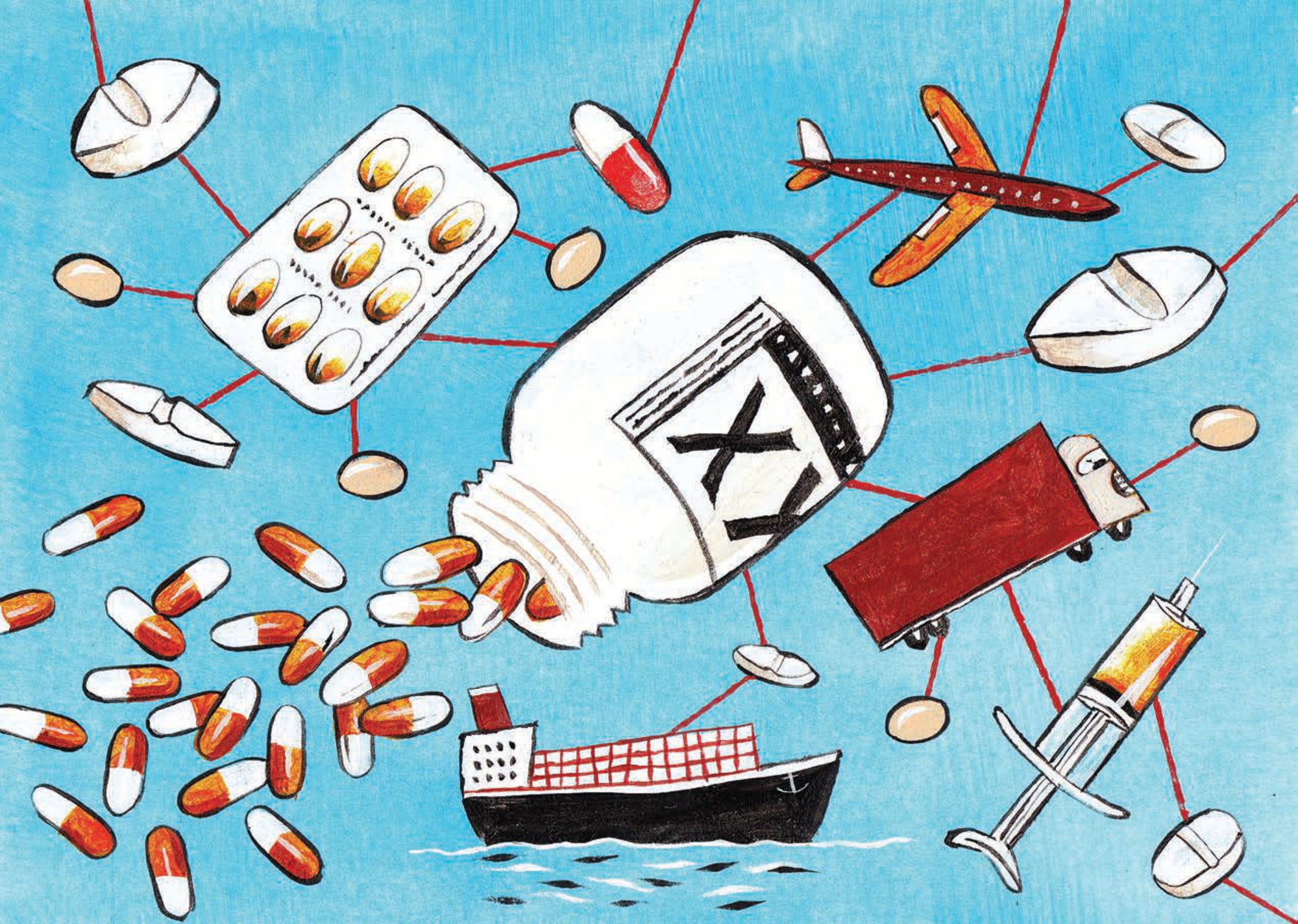The main producing economies of fake pharmaceuticals and the key transit points are determined using statistical “filters” (see below). This is done based on three sources of information:
data on seizures of counterfeit pharmaceuticals.
international trade statistics on the pharmaceutical sector, and
industrial activity data for the pharmaceutical sector.
An important data limitation should be highlighted in this context. While the quality of data on customs seizures of infringing pharmaceutical products received from member countries of the EU and from the US is very high, the data from South American, African, Middle Eastern and Asian customs authorities are of insufficient quality. Hence the mapping exercise for the EU and the US as destinations is relatively precise, but a precise charting of trade routes and the modes of transport for the other regions is not possible. For transparency purposes, all data gaps were highlighted throughout the analysis.
In addition, the datasets identify a set of EU member countries as provenances. However, these identifications are based on data from the European Commission’s Directorate-General for Taxation and Customs Union (DG TAXUD), and refer to goods coming from outside the EU that were seized in a different member state to the country where it entered the EU. This is because DG TAXUD data refer only to imports to the EU from third countries, and do not include internal EU trade.

 is economy i’s registered seizures of all types of infringing goods included in a given product category p that originate from economy e at a given year in terms of value.
is economy i’s registered seizures of all types of infringing goods included in a given product category p that originate from economy e at a given year in terms of value.  is economy i’s relative seizure intensity (seizure percentage) of all infringing items within the product category that originate from economy e, in a given year:
is economy i’s relative seizure intensity (seizure percentage) of all infringing items within the product category that originate from economy e, in a given year: , such that
, such that 

 , is then determined by averaging seizure intensities,
, is then determined by averaging seizure intensities,  , weighted by the reporting economy’s share of world imports from known counterfeit and pirate origins.
, weighted by the reporting economy’s share of world imports from known counterfeit and pirate origins.

 is economy i’s imports of goods in a given product category p from economy e at a given year in terms of value, so that
is economy i’s imports of goods in a given product category p from economy e at a given year in terms of value, so that 

 is defined as the total registered world imports of all sensitive goods in the product category p from provenance economy e.
is defined as the total registered world imports of all sensitive goods in the product category p from provenance economy e. is defined as the total registered world imports of all sensitive goods in the product category p from all provenance economies.
is defined as the total registered world imports of all sensitive goods in the product category p from all provenance economies.  , is then given by:
, is then given by: , such that
, such that  ,
, 

 . Following Hald (1952), the density function of the left-truncated normal distribution for
. Following Hald (1952), the density function of the left-truncated normal distribution for  is given by
is given by
 is the non-truncated normal distribution for
is the non-truncated normal distribution for  specified as:
specified as:
 and
and  , are estimated over the transformed counterfeiting factor index,
, are estimated over the transformed counterfeiting factor index,  , and given by
, and given by  and
and  .
.  .
.
 is the output of product p by economy e in a given year.
is the output of product p by economy e in a given year. 
 is re-exports of product p by economy e in a given year.
is re-exports of product p by economy e in a given year.